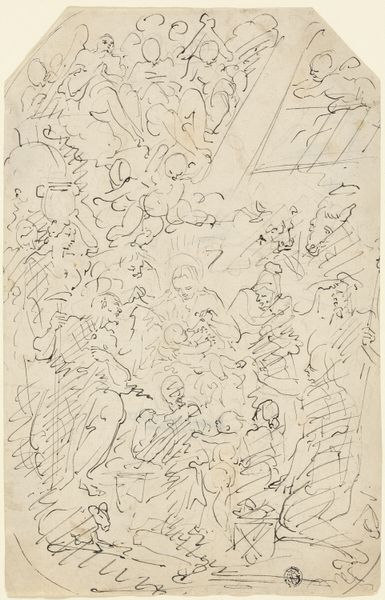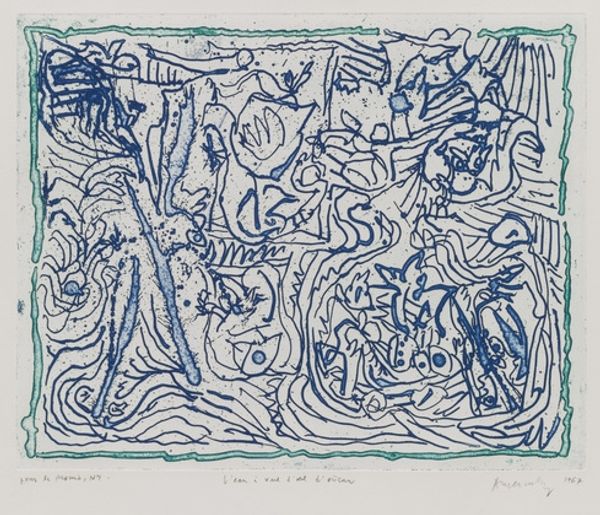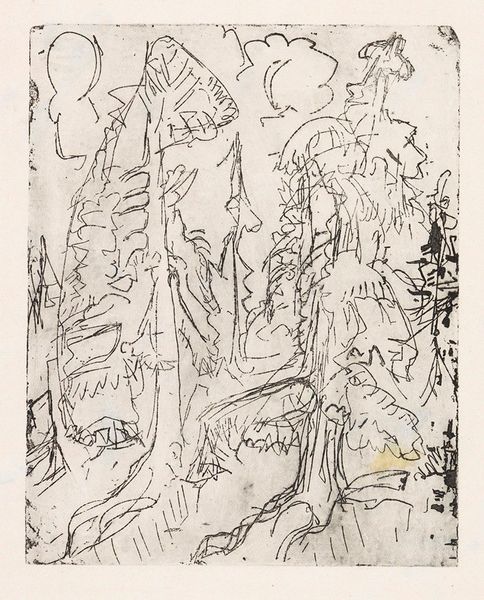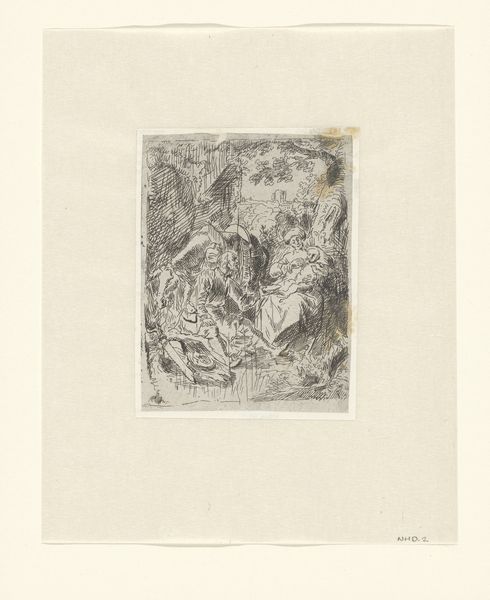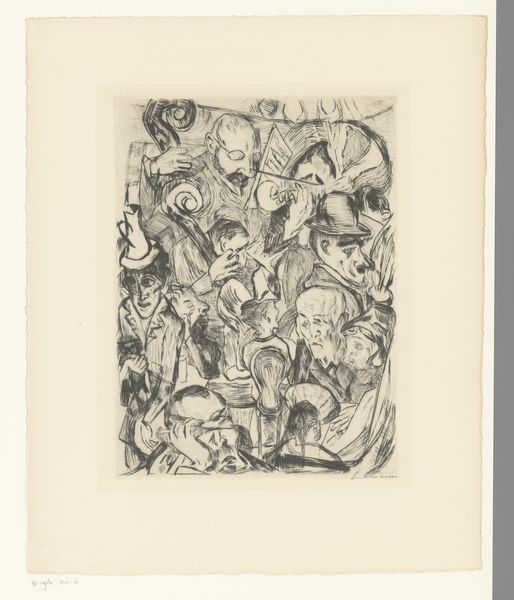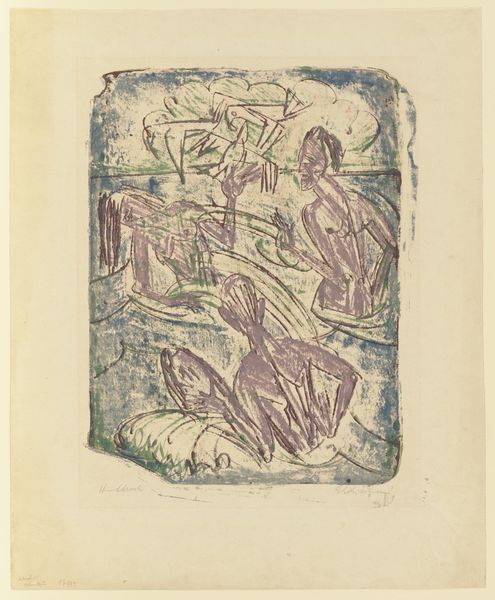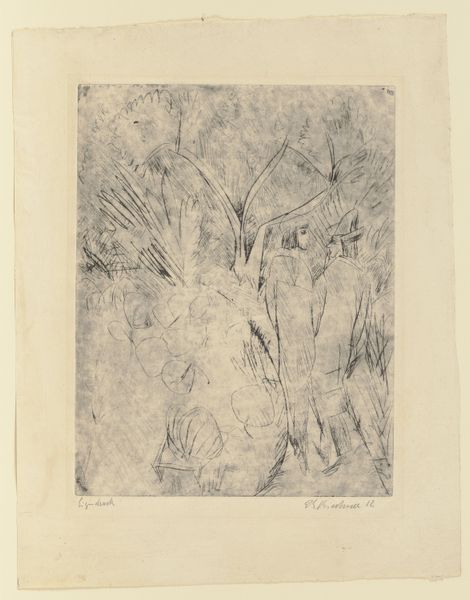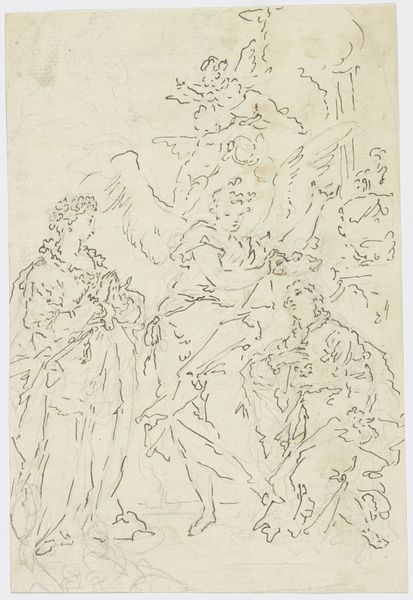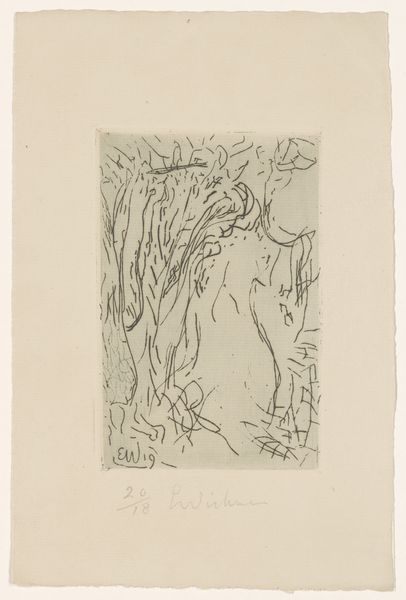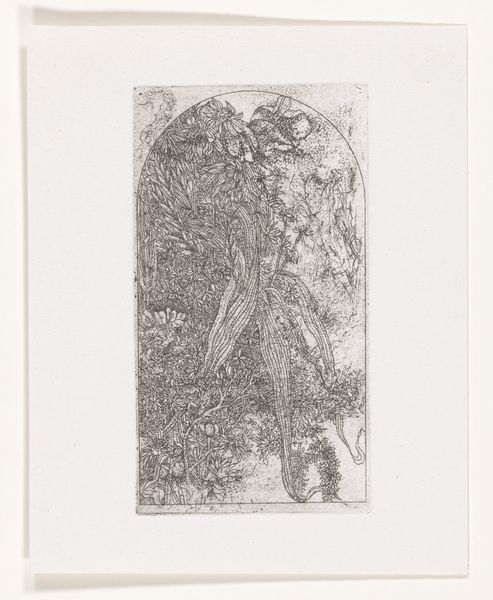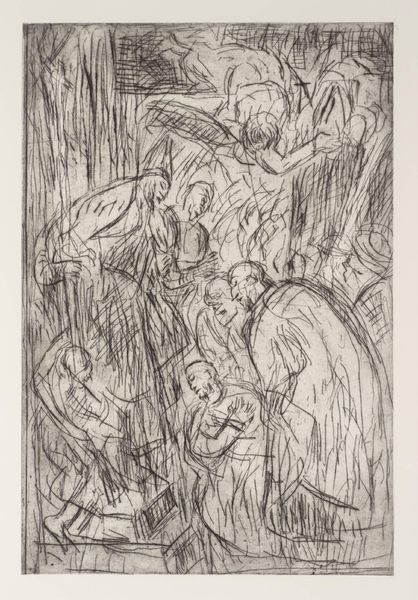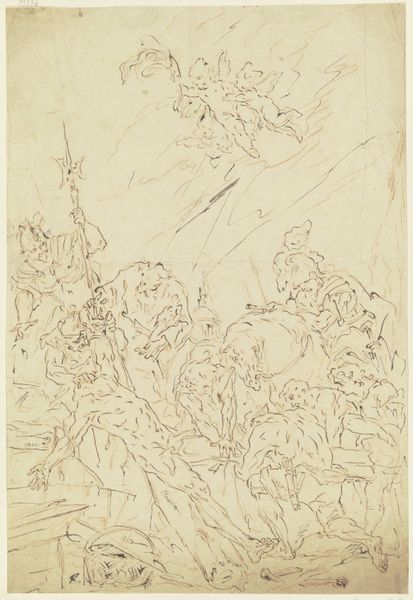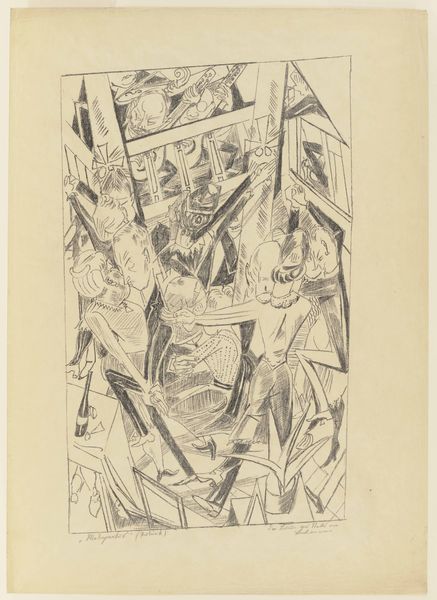
drawing, automatism, ink
#
drawing
#
automatism
#
pen drawing
#
pen illustration
#
pen sketch
#
figuration
#
ink line art
#
ink
#
ink drawing experimentation
#
pen-ink sketch
#
abstraction
#
line
#
pen work
#
sketchbook drawing
#
sketchbook art
#
surrealism
#
doodle art
Copyright: Andre Masson,Fair Use
Curator: Welcome! Let's discuss "Bones and Chrysalids," a 1955 ink drawing by André Masson, currently residing at MoMA. Editor: This piece feels... frenetic. A jumble of lines and shapes. It's hard to discern any clear forms. What do you see in it? Curator: It is indeed, but controlled! It reads to me as Masson exploring automatism, but with an underlying tension reflecting post-war anxieties and a longing for transformation. Consider the title itself: "Bones and Chrysalids." Death and rebirth are intertwined here, no? Editor: Definitely, I see the chrysalids hinting at metamorphosis, and bones could represent the aftermath of something. Curator: Precisely. But let’s dig deeper into the context. Masson, as a Surrealist, aimed to unlock the unconscious. Post-World War II, this exploration takes on a darker hue. Could those "bones" symbolize the trauma and devastation of the war? And what does it mean for our current global environment and politics, how does trauma translate into visual language today? Editor: It could, but why so abstract? Wouldn't it be more effective with clearer imagery? Curator: That's where the power of automatism lies. By relinquishing conscious control, Masson tapped into primal emotions and societal unease. Abstraction allows for multiple interpretations, forcing the viewer to confront their own subconscious. We are invited into an internal landscape. Editor: So it's about prompting us to make those connections ourselves, about rebirth and anxieties that exist outside the scope of one artwork, but extend far beyond it? Curator: Exactly! It asks us to examine how we process trauma, personally and collectively. Art becomes a mirror reflecting not just what is, but what could be, a challenge to engage with our own inner “bones” and find our own chrysalis moment. Editor: I hadn't considered it that way. It makes me want to delve more deeply into post-war Surrealism. Curator: And how it speaks to our times, today! Hopefully this provided some food for thought.
Comments
No comments
Be the first to comment and join the conversation on the ultimate creative platform.
